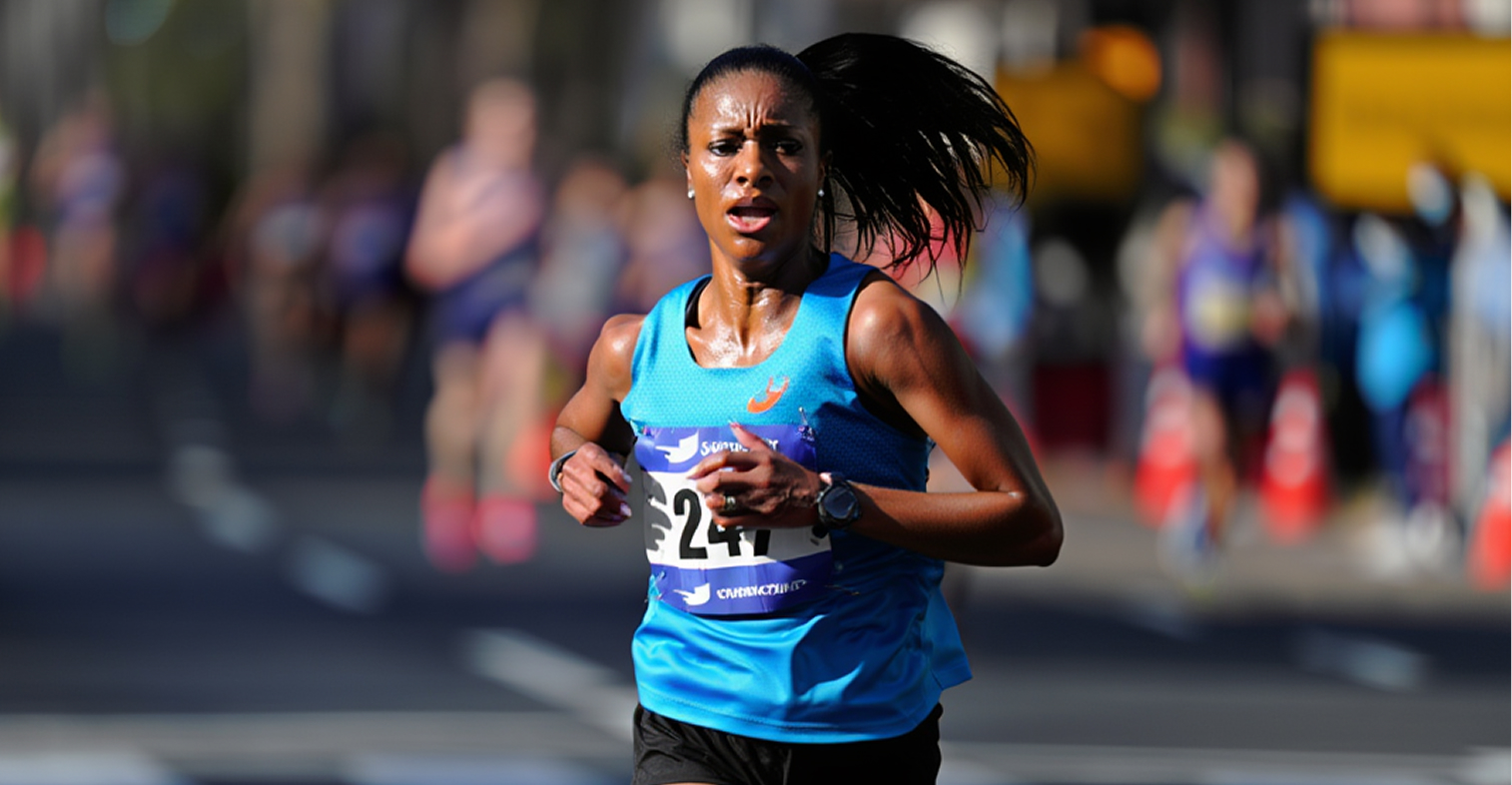
According to the Billat method, performance does not depend on a “magic timer”, but on the physiological stability : your pace should allow your body to Recycle your lactates, of maintain oxygenation And of preserve glycogen stores.
Concretely?
Your marathon pace should be located Around 80 to 85% of your VMA, (Tool to measure your VMA) a “high endurance” speed, where you run fast but still in control.
You need to be able to breathe fluidly, without hyperventilating, and keep a natural variability in your rhythm : slow down slightly on the climbs, relaunch effortlessly on the descents.
👉 It is not the rigidity of your appearance that determines your performance, but your ability to adjust yourself without exhausting yourself.
Billat's research shows that the body knows how to regulate itself very well if you listen to it.
Rather than running “on time”, you must learn to run “on the feeling”.
On The Borg scale1 (from 6 to 20), tone perceived effort should stay around 14-15 over the first two thirds of the marathon, a “sustained but comfortable” effort.
If you are already 17 to 25 km away, you are overconsuming energy: the wall awaits you.
The perception of effort is what allows you to be Actor of your race, not a slave to your watch.
Your brain adjusts your pace to allow you to finish, as long as you listen to it.
1 La Billat method relies a lot on the perception of effort, and for that, the most useful tool is still The Borg scale.
Created by the Swedish physiologist Gunnar Borg, it measures The intensity of your perceived effort, that is, how you really feel, regardless of the cardio or the watch.
She goes from 6 to 20 (or sometimes 1 to 10 in a simplified version):
In marathon, the objective is to stay around 13-14/20 over the first two thirds, then gradually ascending to 15-16/20 at the end, without ever reaching red.
👉 In other words: if you are already 17 to 25 km away, you are overrevs.
The Borg scale is your indoor GPS: it allows you to run To the right feeling, not to the stress of the timer.
Véronique Billat has observed it among the best marathon runners: most of them achieve their Second half faster than the first.
Why? Because they ran the first part in economics.
They did not try to “keep up”, but to let their body find its optimal rhythm.
The key:
This dynamic management of effort allows the cardio-respiratory system to remain effective for longer.
👉 A successful marathon is a race that ends in acceleration, not in survival.
Contrary to popular belief, a perfectly linear look is not optimal.
The human body works better with micro-fluctuations in speed : they stimulate metabolic exchanges, delay muscle fatigue and improve race recovery.
Alternating speeds slightly (for example + or - 3 seconds per km depending on the terrain or sensations) helps maintain mental freshness and maintain better race economy.
It is what Billat Call her “physiological variability” : the ability to adapt without breaking the balance.
Race management is also energy management.
Each unnecessary acceleration consumes more glycogen.
Billat insists on the importance of preserve reserves up to the 30th km while staying in a stable consumption zone.
Hydrate yourself regularly, at each refuel, start eating as early as the 45th minute, and promote continuous intake rather than late “boosts”.
👉 Energy is built with regularity, not with haste.
Objective: test carbohydrate intake (Energy gel - 30—60—90 g/h) and sodium during training.
Your digestive system needs to train as much as your muscles.
On long outings, you never test a gel for the first time on D-Day 😉
Over 1 to 2 long sessions:
• Choose a target quantity (e.g. 40—50 g carbs per hour)
• Split: 1 small shot every 15—20'
• Test water alone/isotonic drink/gel + water
• Note: digestive comfort, perceived energy, thirst, salty desires
We want refueling to support the sensation, without creating heaviness or extreme highs/lows.
🧃 Mission:
👉 Write your provisional feeding plan for the marathon on paper or on your phone.
The marathon is not a power test, but a Intelligence test.
Getting to know you, to regulate yourself and to adapt yourself is to run “à la Billat”, with awareness and efficiency.
Your watch gives you data, but your body gives you the truth.
So listen to him, trust him, and let your instincts manage the tempo.
Because deep down, The ideal marathon is one where you finish more lucid than tired.